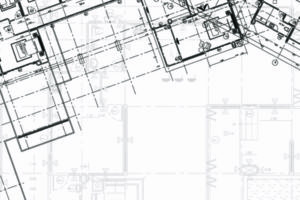Wayfinding: The Key to Creating Comfortable Environments

Wayfinding: The Key to Creating Comfortable Environments
The science of wayfinding is a comprehensive process designed to orient people as well as guide them to their desired destination. The messages displayed on signs must minimize the natural confusion a visitor feels when arriving at a facility. Signage is the key component of any successful wayfinding solution and they must work together to ensure that messages are clear, legible, in the right place and accessible to people regardless of language or physical ability.
- Audience (primary and secondary)
- Visibility (location, architectural features)
- Simplicity (clear messages, pictograms, arrows)
- Sustainable (updateable, built to last, elements)
Audience — Identifying the Primary and Secondary Users is Key to Creating a Successful Wayfinding Solution
Displaying Multi-Lingual Messages and Pictograms Ensures Broad Understanding
While English is the majority language spoken in the U.S., the number of ESL (English as Second Language) people has grown dramatically. In addition, more than 9 million adults in the U.S. are illiterate and rely on pictograms and symbols to find their way. Therefore, the most effective solution is to integrate multilingual messages and pictograms on key information and regulatory signs. Although there are a number of universally recognized symbols used in signage, there may be symbols that may have different connotations in other cultural and ethnic backgrounds and thus may offend certain users. We recommend using the following sources for pictograms:
- SEGD Healthcare Icons
- Symbol Strategy: Wayfinding Techniques with Numbers, Letters, Landmarks, and Unique and Universal Pictograms
Visibility
- Where a wayfinding message is placed is just as important as the message it conveys.
- Letter heights and message color contrast should conform to the latest ADA Guidelines.
- Color schemes and pictograms should be easy to see and easy to interpret and the signage should be placed in well-lit areas.
It’s all about Location, Location, Location
You’ve just created the worlds-greatest message and wayfinding solution. It features beautiful map graphics, easy to understand pictograms and a logical wayfnding color scheme. The solution might be perfect, but if the architectural lighting is sub-par and the placement of signage is not at natural decision points along frequently traveled paths, it will not be successful. Therefore, before embarking on designing a wayfinding signage solution, you should:
- Take LRV (light reflectance value) readings of the architectural space during business hours.
- Walk the pathways and see for yourself where the decisions points are and where a visitor might need secondary information to keep them moving in the right direction.
Simplicity
- The shape, color and design of the wayfinding signage should complement the environment.
- People should be able to comprehend the intent of the message in under five seconds, and the layout should be uncluttered and easy read.
- Remember the adage that “less is more” when it comes to communicating wayfinding solutions.
Keep the Message Short and Simple
The biggest, most common mistake made in wayfinding plans is “over-signing and over-messaging.” Too many signs create visual clutter and cause people to stop and read. This causes traffic jams in busy hallways and can even cause visitors to retreat back to the start if the amount of information is too confusing. Here are some tips to help keep messages short and simple:
- Whenever possible, integrate color schemes into the wayfinding plan that match the destination.
- Use common language and keep it to one line.
- When using directional arrows, make sure they point in a logical direction.
- Group destination messages under common directional arrows.
Sustainability
- Designing modular components into a wayfinding signage solution helps facility managers keep up with changes to departments and tenants.
- It’s not the original signage order that is the problem, it’s the replacement signs ordered later.
- Value-engineering of design keeps cost down while improving performance.
Functionality is Key to a Long Lifecycle
Facility managers have a lot to do on a daily basis. Light bulbs burn out, spills ruin carpets, and management and tenants decide to move entire departments or even expand the facility. The last thing they want to hassle with is replacing a multitude of signs when all that needs to change is one or two lines of text or a directional arrow.
By engineering modularity into directories and directional signage, the burden on facility managers is lifted because they only need to replace a panel, not the entire sign. This ensures the directional information and wayfinding solution stays current, which helps keep visitors and staff moving in the right direction.

